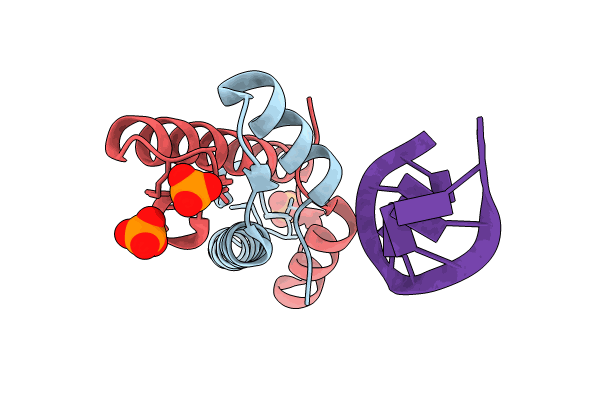
Deposition Date
2024-04-15
Release Date
2024-06-26
Last Version Date
2024-10-09
Entry Detail
PDB ID:
9F0E
Keywords:
Title:
Bacterial histone protein HBb from Bdellovibrio bacteriovorus bound to DNA
Biological Source:
Source Organism:
Bdellovibrio bacteriovorus HD100 (Taxon ID: 264462)
synthetic construct (Taxon ID: 32630)
synthetic construct (Taxon ID: 32630)
Host Organism:
Method Details:
Experimental Method:
Resolution:
1.85 Å
R-Value Free:
0.26
R-Value Work:
0.24
R-Value Observed:
0.24
Space Group:
C 1 2 1


